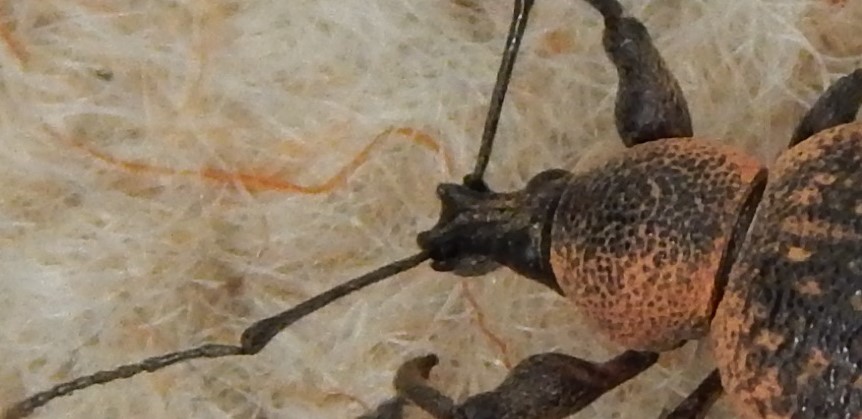
[244] Otiorhynchus armadillo and other Weevils
Otiorhynchus sulcatus, Black Vine Weevil
Phyllobius argentatus, Silver-green Leaf Weevil
Polydrusus formosus, Green Immigrant Leaf Weevil
Sitona lineatus, Pea Leaf Weevil
Introduction
Otiorhynchus armadillo is taken as a representative of the Weevil family, Curculionidae, which contains about 10 000 species. They don’t all have common names. About four hundred species can be found on the UK. Many of them are considered to be agricultural pests.
Their peculiar appearance is characterized by long snouts with bent antennae projecting sideways.
(Other species in the superfamily Curculionoidea are also called weevils, as are a few other unrelated species.)
Taxonomy
Kingdom – Animals
Phylum – Arthropods
Class – Insects
Order – Coleoptera (Beetles)
Infraorder – Cucujiforma
Clade – Phytophaga
Superfamily – Curculionoidea
Family – Curculionidae (True Weevils)
Subfamily – Entiminae (Short-nosed or Broad-nosed Weevils)
Tribes – Otiorhynchini, Phyllobini, Polydrusini, Sitonini
Genera – Otiorhynchus, Phyllobius, Polydrusus, Sitona
Scientific Names – Otiorhynchus armadillo and others as listed.
Names
The word weevil from Old English and Germanic roots used to mean any beetle. It is cognate with weave, probably from the appearance of the pupal case. Individual species tend to be named from their appearance or from one of their host plant species, but many have no common name.
The genus Curculio derives its name from the Latin for a type of weevil. as for many type species, this has given the names to higher taxa up to the superfamily Curculionoidea.
Otiorhynchus, often erroneously spelled as Otiorrhynchus comes from Ancient Greek roots otio-rhunkos, meaning ear-snout. [It’s always easier to find the etymological roots of scientific names than to find why the name was picked. Perhaps the snout looks a bit like an ear.] Armadillo is presumably an allusion to the animal called an armadillo. Sulcatus, from the Latin, means ploughed or grooved.
Phyllobius comes from the Greek phyllo- meaning leaf. Argentatus means silver (coloured.)
Polydrusus perhaps comes from Greek roots, poly-drosos meaning ‘much-dew.’ Formosus means beautiful or well-formed
Sitona from Latinized Greek relates to grains. Lineatus means lined.
Weevils
With so many genera and species, it is not surprising that the taxonomy of this family is complicated and disputed. There are about two dozen subfamilies most of which are not universally agreed. Entiminae, the largest subfamily, has over fifty tribes.
Most of what I can say about weevils applies to all the species that I have seen in Britain. They feed on plants. The larval stages live underground and feed on roots. They overwinter, then pupate, and adults also feed on plant matter. They look like beetle with long snouts.
Some are very specific as to their host species but many have more general tastes.
They are all common and widespread over Britain and found over much larger areas.
Some weevils have very long snouts that can be longer than the rest of the body but all of my examples are from the relatively short-nosed subfamily Entiminae.
Otiorhynchus armadillo
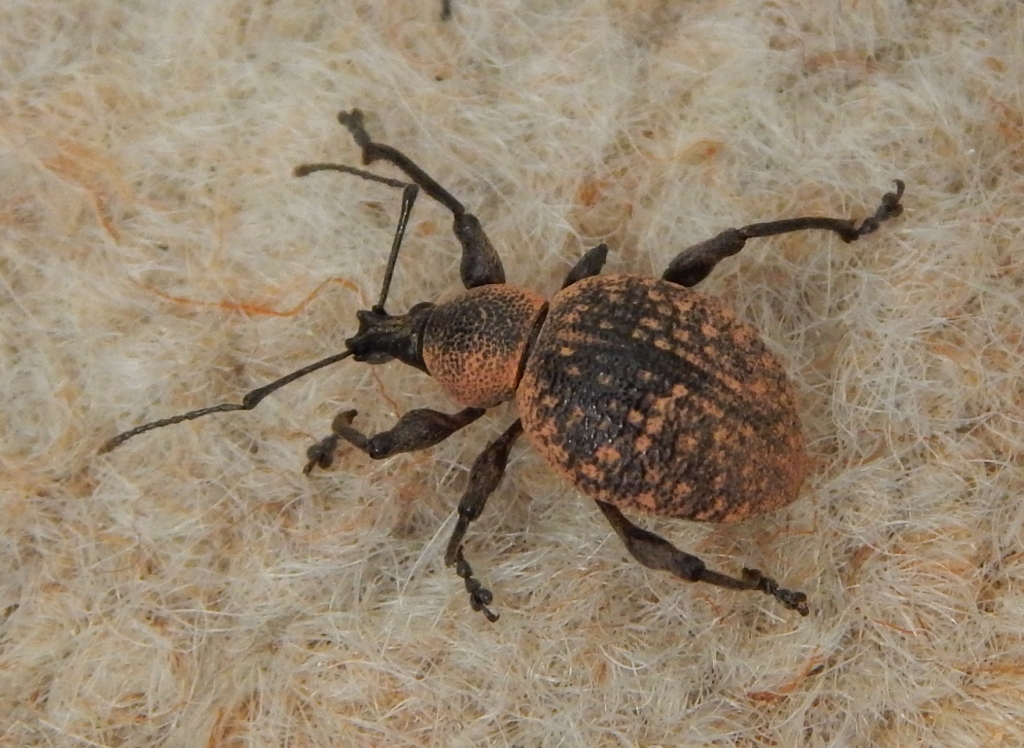
The first insect identified in my new house three years ago.
Otiorhynchus sulcatus, (Black) Vine Weevil
Common and widespread throughout Britain, the larvae feed on roots and overwinter.
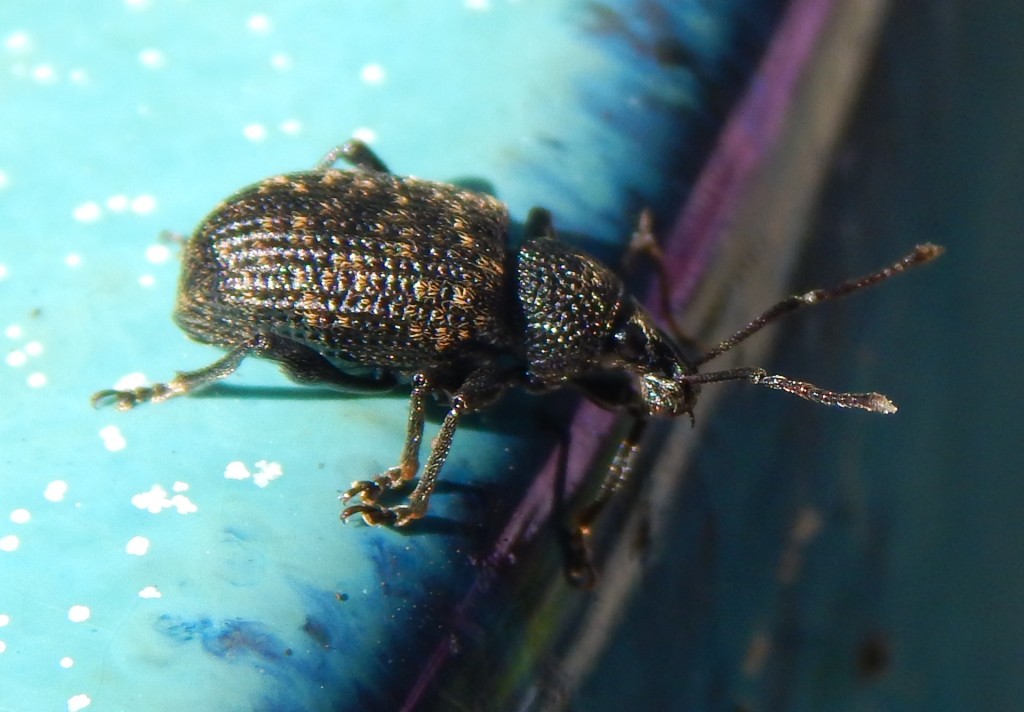
Two years later, another visitor to my home.
Phyllobius argentatus, Silver-green Leaf Weevil
A bright metallic green weevil, widespread and common.
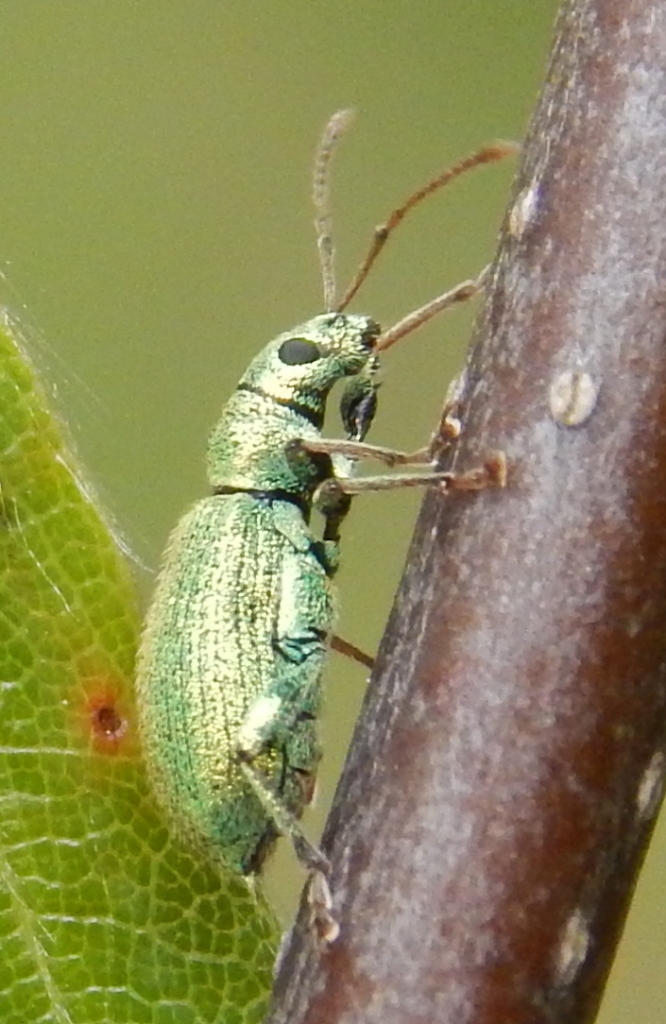
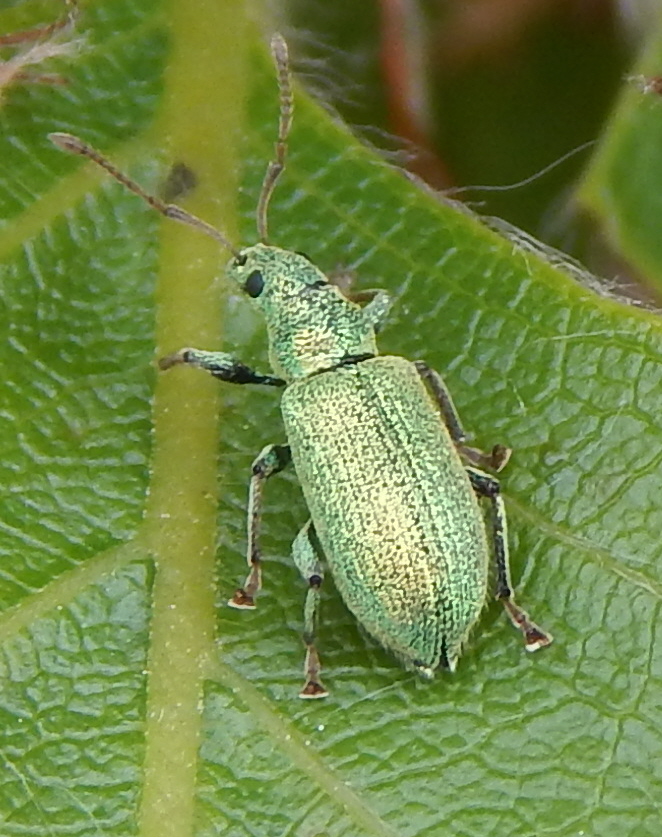
I saw this one in mid-Wales.
Polydrusus formosus, Green Immigrant Leaf Weevil
This weevil lays its eggs in the bark or leaves of deciduous trees. Larvae feed on roots underground and overwinter. It is becoming common and widespread in England.
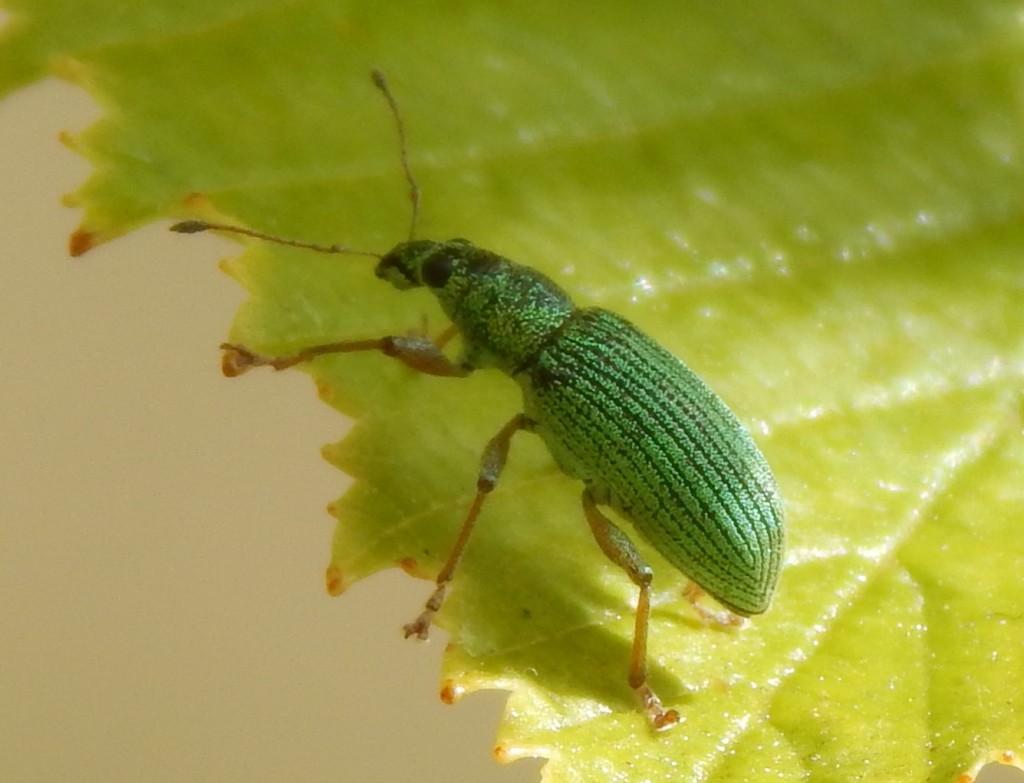
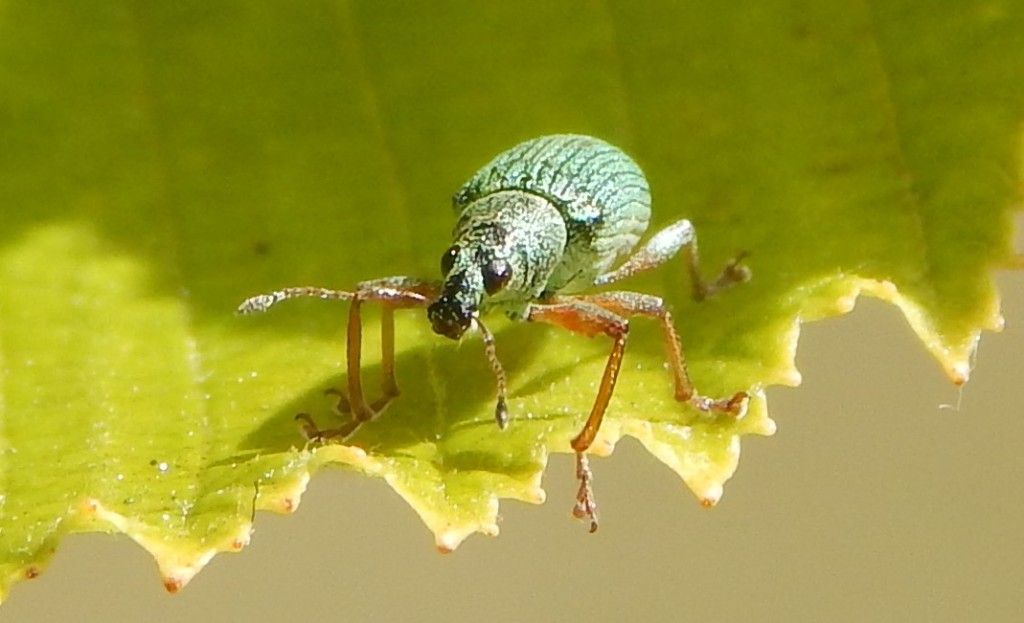
Sighted in Pittville Park, one of my local haunts.
Sitona lineatus, Pea Leaf Weevil
Brown with longitudinal stripes. Feeds on peas and beans causing very little damage. Common and widespread.
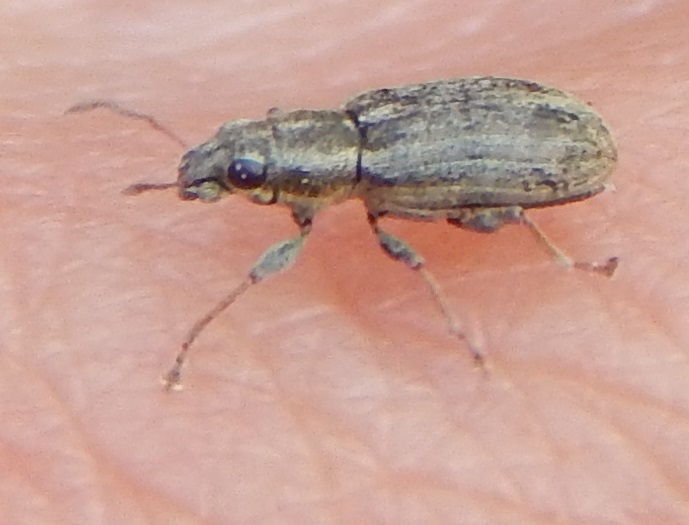
Seen at Coombe Hill Nature Reserve, a local site that I visit for birds and dragonflies.
See also
We have more insects to come, even some more beetles, but they won’t look like weevils
As I have said before, keep looking on the leaves and flowers of plants, but also look out in you homes and gardens!
